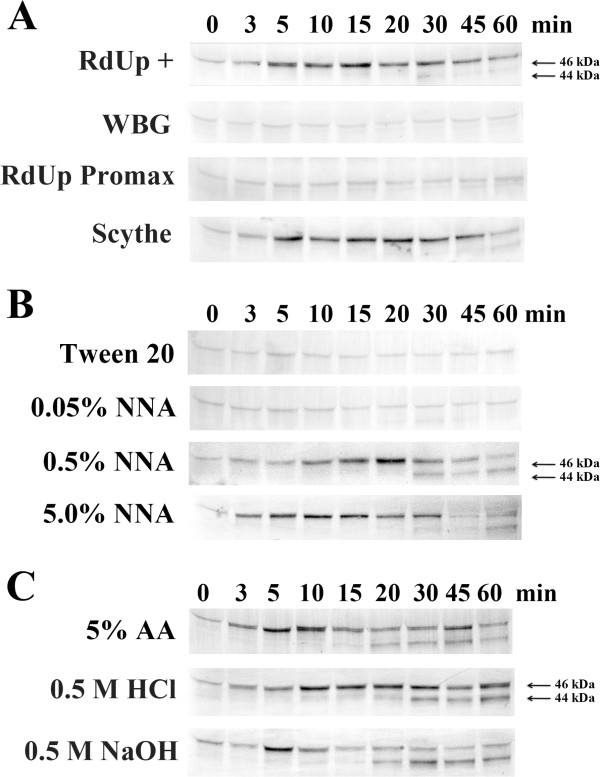Figure 1.

Herbicide exposure results in the activation of a p46 and p44 MAPK in L. temulentum . (A) The herbicides were painted directly onto the leaves of three-to-four-week-old plants using a soft bristle brush. RdUp+: "Roundup Weed and Grass Killer - Ready to use plus" was used directly from the bottle; WBG: "Weed-B-Gon Max concentrate" diluted 1 to 64 mL of 0.2% tween 20; RdUp Promax: "Roundup Promax concentrate" diluted 1 to 24 mL of 0.2% tween 20; Scythe: "Scythe Herbicide concentrate" diluted 1 to 25 mL of 0.2% tween 20. (B) Nonanoic acid (NNA) was sprayed onto the leaves of three-to-four-week-old plants at the concentrations indicated, all solutions contained 0.1% tween 20. (C) Acetic acid (AA), HCl and NaOH were sprayed onto the leaves of three-to-four-week-old plants at the concentrations indicated, all the solutions contained 0.1% tween 20. One plant per time point was collected at the times indicated above for each treatment described. To determine MAPK activity, immunoblots of protein extracts were performed using anti-phospho-MAPK (Erk1/2) antibody. The experiments were independently repeated a minimum of three times. Representative blots are presented.
